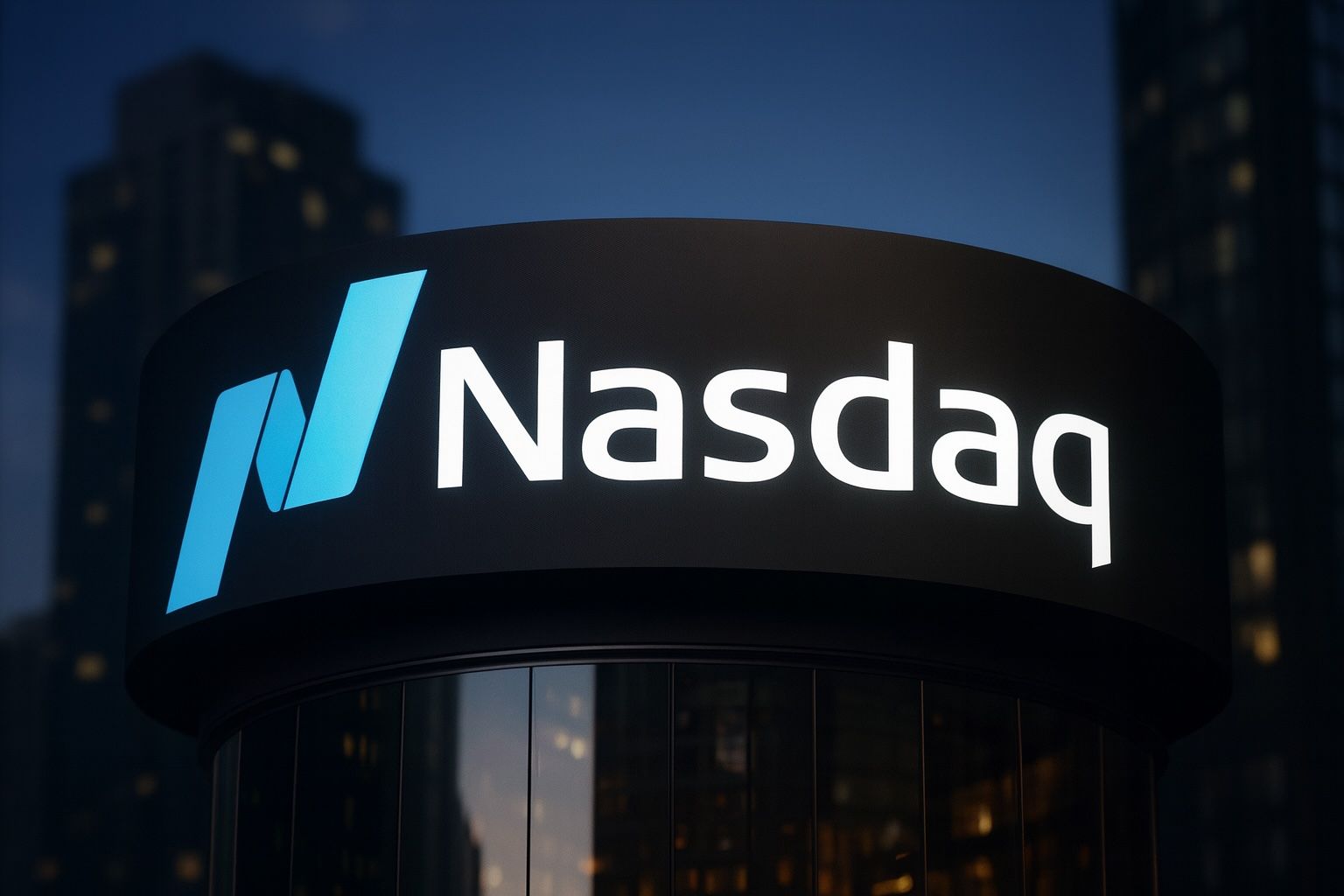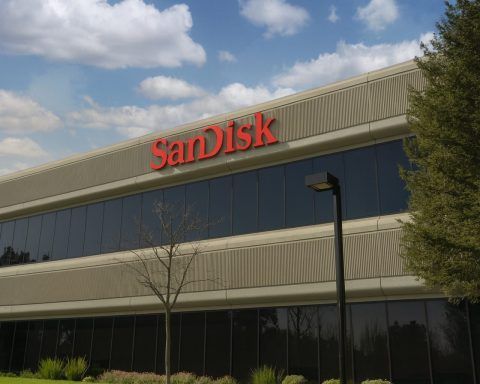The Nasdaq Composite Index surged to new highs in early October but slid by week’s end amid tariff fears and shifting investor sentiment. The tech-heavy index finished October 1 at 22,660, up about 0.3% on the day, as healthy corporate earnings and big gains in defense-related biotech names lifted the market [1]. By October 2, the Nasdaq added another 0.4% – closing at a fresh record high – powered by broad gains despite worries over a looming government shutdown [2] [3]. The rally continued into Monday, October 6, when the Nasdaq jumped 0.7% to new closing highs on the heels of blockbuster news in the chip sector [4].
This early-week strength proved short-lived. On Tuesday, October 7 the Nasdaq gave back 0.7% by day’s end after initially touching record intraday highs [5]. Stocks rebounded on Wednesday (October 8) with the Nasdaq climbing 1.1% to yet another all-time closing high [6]. By Thursday (Oct. 9) the benchmark again ended higher (up 1.1% to 23,043.38) as investors parsed Federal Reserve meeting minutes and broad-based tech stocks bounced back [7] [8]. But the party ended abruptly on Friday, October 10: after hit-and-run trade tweets from President Trump, the Nasdaq plunged 3.6%, wiping out much of the week’s gains [9]. The index closed roughly 2.5% lower on the week overall, snapping a two-week string of gains, and up about 15% for the year to date [10] [11].
Technology Sector Leads Rally
Technology stocks were at the heart of the early-month rally. Semiconductor and AI-related companies powered the Nasdaq’s advance. On October 6, Advanced Micro Devices (AMD) rocketed nearly 24% after announcing a multi-$10 billion AI chip deal with OpenAI [12]. Nvidia (NVDA), meanwhile, briefly hit record intraday highs on accelerating AI demand before pulling back. Chip equipment makers had a choppy week: Micron and TSMC climbed modestly on Oct. 3, while Intel, Lam Research and Applied Materials reversed earlier gains as profit-taking set in [13] [14]. By Friday, semiconductors led losses: AMD slid 7.8%, Nvidia 4.9%, and chip design and equipment names (e.g. Synopsys, Teradyne) dropped around 8–9% after the sudden re-escalation of U.S.-China trade tensions [15] [16].
Big Tech trends also influenced performance. NVIDIA stock regained momentum mid-week on upbeat commentary from CEO Jensen Huang, rising about 2% on Oct. 8 after he said “AI demand has gone up substantially” [17]. Other tech leaders like Apple and Microsoft were steady as the Nasdaq wavered. Notably, the rally was often led by smaller “Magnificent Seven” names whose valuations have raced higher, underscoring a value-versus-growth dynamic in play [18]. As one observer noted, investors had been rotating out of richly-priced U.S. growth stocks into more stable value sectors and overseas markets [19] [20]. Even so, analysts remain cautious: Matthew Keator of the Keator Group warned that with the earnings season near and data scarce, “it’s natural to see a bit of a pullback” [21].
Biotech and Healthcare Stocks
Healthcare and biotech names showed pockets of strength. Defensive healthcare stocks rallied on policy news early in the month. On October 1, drugmakers jumped after the U.S. announced plans to cut Medicaid drug prices. Pfizer (PFE) surged 6.8% and Eli Lilly (LLY) 5.0% on Oct. 1, reflecting optimism over the new “most favored nation” pricing proposal [22]. Other biotech issues climbed in sympathy with the broad market in early trading days, as the Nasdaq’s gains lifted the sector. (For example, the Nasdaq Biotech Index was around 5,000–5,100 points in early October, up from about 4,900 in late September [23].)
That said, volatility remained high for biotechs: individual companies swung sharply on trial news and drug approvals, but no major single-company biotech news dominated the Nasdaq specifically in this period. Health-care stocks’ overall defensive appeal did help the market pause on pullbacks; one report noted that even amid the tech sell-off on Oct. 10, consumer staples (like food and drug retailers) were among the few S&P sectors still in the green for the day [24].
Consumer Discretionary and Other Movers
Consumer-focused stocks had a mixed month, reflecting both strong earnings and trade-war worries. Retailers and auto-makers saw notable moves. Nike Inc. (NKE) jumped nearly 6% on Oct. 1 after reporting better-than-expected quarterly sales, even as it tempered full-year guidance [25]. eCommerce giant Amazon (AMZN) traded higher late in the week – up about 1.6% on Oct. 8 – buoyed by special promotions (“Prime Big Deal Days”) and modest guidance, though it ultimately slid 5% on Oct. 10 amid tariff concerns over Chinese-made goods [26] [27].
Auto sector names were especially volatile. Tesla (TSLA) teased investors early in the week: it shot up 5.5% on Oct. 6 after the company hinted at a product launch, but then fell 4.4% on Oct. 7 when announcing lower-priced versions of its Model 3 and Y, which Wedbush analysts said were “not as cheap as … hoped,” leaving them “relatively disappointed with this launch” [28] [29]. Ford Motor (F) and other legacy automakers also fluctuated on supply news: Ford dropped 6.1% on Oct. 7 after a key aluminum parts supplier burned, disrupting output [30].
Apparel and leisure saw sharp swings. Levi Strauss (LEVI) tumbled 12% on Oct. 10 after its earnings call warned that new tariffs on Chinese goods would pressure margins, despite strong sales performance in Q3 [31]. Conversely, consumer staples PepsiCo (PEP) bucked the trend and spiked 3–4% by Oct. 10 on robust earnings and a CFO shake-up, making it the top S&P 500 performer of the week [32].
Elsewhere in smaller-cap land, a few companies made headlines. AppLovin (APP) – a mobile-ad tech stock – plunged 14% on Oct. 6 amid SEC probe rumors, then rebounded 7.6% on Oct. 7 as analysts reiterated bullish ratings [33] [34]. Arctic and AI plays like Confluent (CFLT) jumped over 7% on Oct. 8 on takeover buzz [35]. Overall, many of the market’s biggest movers during the week were tied to specific earnings reports or news events.
Economic Data, Fed Signals and Trade
Macroeconomic factors set the backdrop all month. The U.S. government shutdown (which began Oct. 1) meant key data releases were delayed, leaving investors to focus on Fed communications and company results [36] [37]. On Oct. 8, Fed minutes revealed that policy-makers cut rates in September and hinted at two more cuts this year. Markets immediately priced in about a 95% chance of another 25-basis-point cut at the Fed’s Oct 28–29 meeting [38] [39]. Federal Reserve officials broadly signaled that a dovish stance would continue, especially as labor market readings moderated – as New York Fed’s John Williams noted, risks are tilting toward requiring “more interest rate reductions before year-end” [40] [41].
However, by week’s end, tariffs stole the headlines. President Trump’s Oct. 9 tweet accusing China of manipulating rare-earth supplies – and threatening “massive” tariff hikes – sparked a market selloff. The Nasdaq had actually climbed to a fresh intraday record on Oct. 10, but immediately reversed course and closed sharply lower after the tweet [42]. Trump later confirmed a 100% tariff on Chinese goods starting Nov. 1, stoking a sudden rout in tech and manufacturing names [43]. Treasury yields responded: the 10-year U.S. Treasury yield dipped back down into the low-4.0% range by Friday [44], while gold and Bitcoin resumed their ascent as investors sought safety [45] [46].
In sum, the Nasdaq’s October saw a tug-of-war between bullish earnings and AI enthusiasm on one side, and political uncertainties (shutdown, trade) on the other. According to analysts at T. Rowe Price, this dynamic has prompted some rotation toward more defensive, value-oriented sectors. As T. Rowe Price’s Sebastien Page put it, from a valuation standpoint he now prefers “non-U.S. value stocks,” given the rich multiples on U.S. tech giants and relatively cheaper alternatives abroad [47] [48]. The week closed on a sobering note, but market participants will be watching earnings reports and Fed hints closely in the days ahead.
Volumes, Volatility and Market Breadth
Trading was notably active during this stretch. For example, on Oct. 9 nearly 20.7 billion shares changed hands across the Nasdaq – well above the 20-session average of 19.6 billion [49]. The CBOE Volatility Index (VIX) briefly fell to the mid-teens on tech-led rallies, but spiked again on Oct. 10. (On Oct. 9, VIX was about 16.3, down over 5% as stocks rose [50].) New highs outpaced lows on bounce days, but breadth flipped on sell-offs. By week’s end, all major U.S. indexes were down roughly 2–3% for the week [51] [52]. Notably, the Nasdaq’s drop on Oct. 10 erased several weeks of leadership: the index has gained about 15% YTD, compared with ~12% for the S&P 500 and ~7% for the Dow [53].
Amid this volatility, one clear trend was investors starting to take profits in costly growth stocks and reinvest in lagging areas. The week’s data reinforce reports of sizable outflows from U.S. growth funds and inflows into value-oriented funds overseas [54] [55]. How long this rotation lasts is uncertain, but market veterans note it often accelerates when high flyers stall. As one put it: after an “almost 90%” run in tech-heavy benchmarks since late 2022, a temporary pullback wouldn’t be surprising [56]. For now, the Nasdaq’s whipsaw through record highs and lower lows reflects both the excitement around AI-driven gains and the nerves around macro headwinds – a balance that will likely shape U.S. markets in the immediate weeks ahead.
Sources: Official market reports and news analysis (including Nasdaq market recaps and Reuters) through Oct. 11, 2025 [57] [58] [59] [60] [61] [62] [63]. Each sector and stock detail is drawn from recent market news.
References
1. www.nasdaq.com, 2. www.investopedia.com, 3. www.investopedia.com, 4. www.investopedia.com, 5. www.investopedia.com, 6. www.investopedia.com, 7. www.nasdaq.com, 8. finviz.com, 9. www.investopedia.com, 10. www.investopedia.com, 11. www.investopedia.com, 12. www.investopedia.com, 13. www.investopedia.com, 14. www.investopedia.com, 15. www.investopedia.com, 16. www.investopedia.com, 17. www.investopedia.com, 18. www.reuters.com, 19. www.reuters.com, 20. www.reuters.com, 21. www.reuters.com, 22. www.nasdaq.com, 23. fred.stlouisfed.org, 24. www.investopedia.com, 25. www.investopedia.com, 26. www.investopedia.com, 27. www.investopedia.com, 28. www.investopedia.com, 29. www.investopedia.com, 30. www.investopedia.com, 31. www.investopedia.com, 32. www.investopedia.com, 33. www.investopedia.com, 34. www.investopedia.com, 35. www.investopedia.com, 36. www.investopedia.com, 37. www.reuters.com, 38. finviz.com, 39. www.reuters.com, 40. www.reuters.com, 41. finviz.com, 42. www.investopedia.com, 43. www.investopedia.com, 44. www.investopedia.com, 45. www.investopedia.com, 46. www.investopedia.com, 47. www.reuters.com, 48. www.reuters.com, 49. finviz.com, 50. finviz.com, 51. www.investopedia.com, 52. www.investopedia.com, 53. www.investopedia.com, 54. www.reuters.com, 55. www.reuters.com, 56. www.reuters.com, 57. www.investopedia.com, 58. www.investopedia.com, 59. www.investopedia.com, 60. finviz.com, 61. www.investopedia.com, 62. www.reuters.com, 63. www.reuters.com







